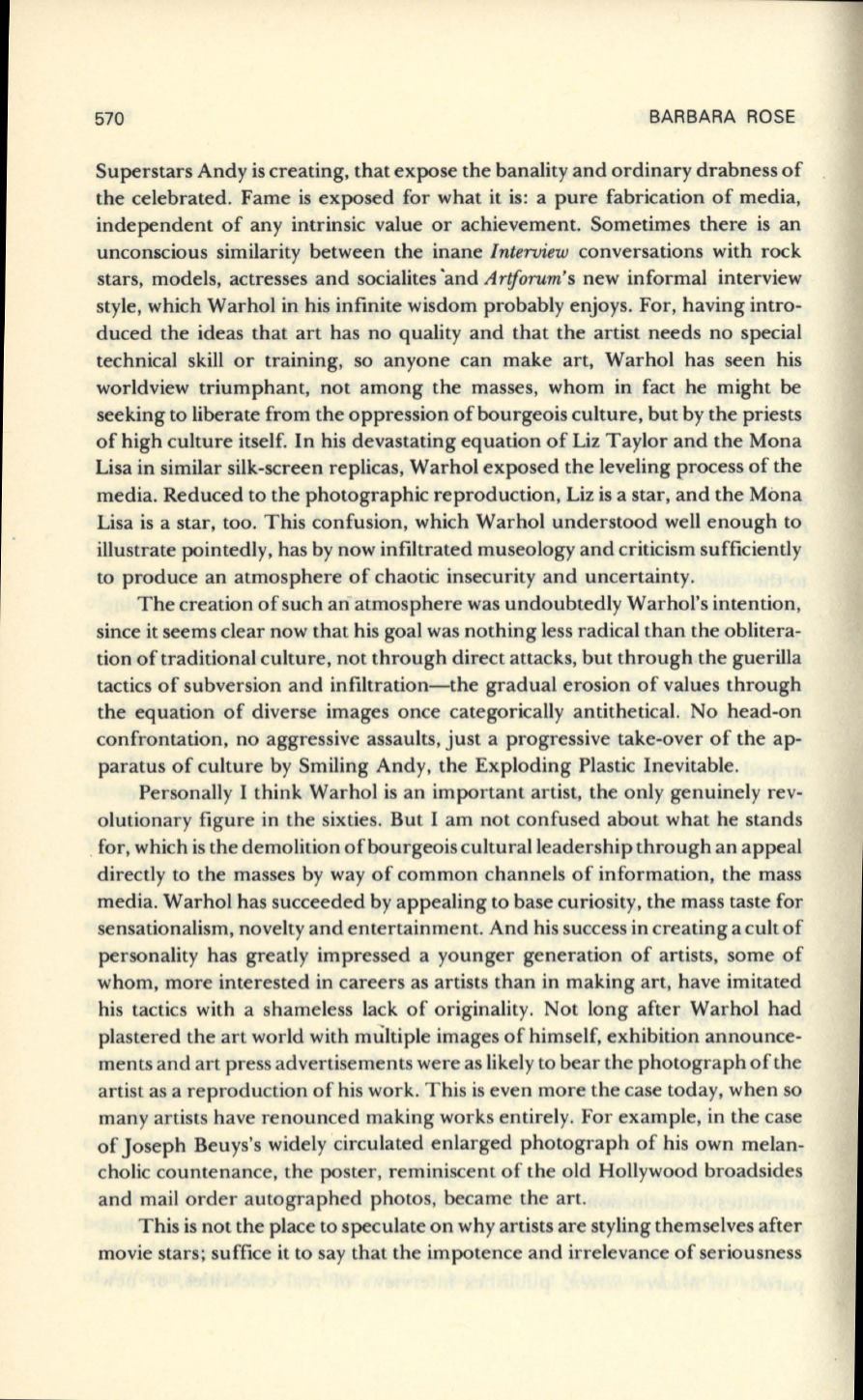
570
BARBARA ROSE
Superstars Andy is creating, that expose the banality and ordinary drabness of
the celebrated. Fame is exposed for what it is: a pure fabrication of media,
independent of any intrinsic value or achievement. Sometimes there is an
unconscious similarity between the inane
Interview
conversations with rock
stars, models, actresses and socialites "and
Artforum's
new informal interview
style, which Warhol in his infinite wisdom probably enjoys. For, having intro–
duced the ideas that art has no quality and that the artist needs no special
technical skill or training, so anyone can make art, Warhol has seen his
worldview triumphant, not among the masses, whom in fact he might be
seeking to liberate from the oppression of bourgeois culture, but by the priests
of high culture itself. In his devastating equation of Liz Taylor and the Mona
Lisa in similar silk-screen replicas, Warhol exposed the leveling process of the
media. Reduced to the photographic reproduction, Liz is a star, and the Mona
Lisa is a star, too. This confusion, which Warhol understood well enough to
illustrate pointedly, has by now infiltrated museology and criticism sufficiently
to produce an atmosphere of chaotic insecurity and uncertainty.
The creation of such an-atmosphere was undoubtedly Warhol's intention,
since it seems clear now that his goal was nothing less radical than the oblitera–
tion oftraditional culture, not through direct attacks, but through the guerilla
tactics of subversion and infiltration-the gradual erosion of values through
the equation of diverse images once categorically antithetical. No head-on
confrontation, no aggressive assaults, just a progressive take-over of the ap–
paratus of culture by Smiling Andy, the Exploding Plastic Inevitable.
Personally I think Warhol is an important artist, the only genuinely rev–
olutionary figure in the sixties. But I am not confused about what he stands
. for, which is the demolition ofbourgeois cultural leadership through an appeal
directly to the masses by way of common channels of information, the mass
media. Warhol has succeeded by appealing to base curiosity, the mass taste for
sensationalism, novelty and entertainment. And his success in creating a cult of
personality has greatly impressed a younger generation of artists, some of
whom, more interested in careers as artists than in making art, have imitated
his tactics with a shameless lack of originality. Not long after Warhol had
plastered the art world with multiple images of himself, exhibition announce–
ments and art press advertisements were as likely to bear the photograph ofthe
artist as a reproduction of his work. This is even more the case today, when so
many artists have renounced making works entirely. For example, in the case
of Joseph Beuys's widely circulated enlarged photograph of his own melan–
cholic countenance, the poster, reminiscent of the old Hollywood broadsides
and mail order autographed photos, became the art.
This is not the place to speculate on why artists are styling themselves after
movie stars; suffice it to say that the impotence and irrelevance of seriousness


